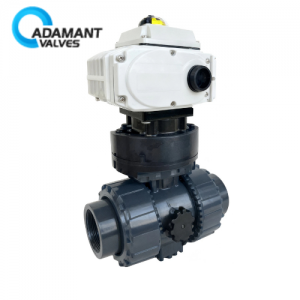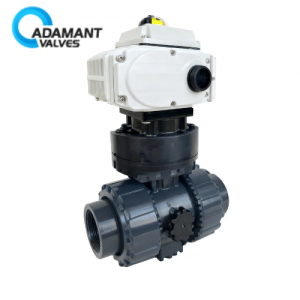Are Breather Valves and Pressure Relief Valves the Same Type of Valve?
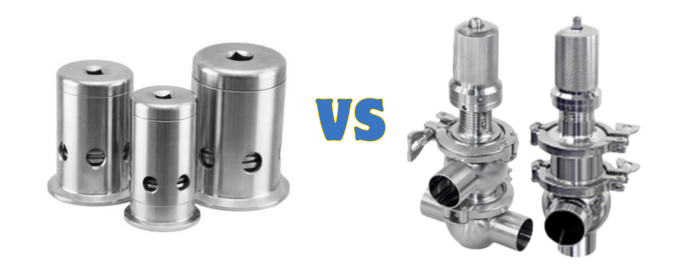
Breather Valves and Pressure Relief Valves (PRVs) are two very common and important types. Both are related to pressure management, so many people wonder if they are the same device.
The answer is: No.
Although they may sometimes be used in the same device, they are fundamentally different in their design purpose, working principles, and primary functions.
A breather valve acts like a tank’s nostril, handling daily minor pressure adjustments. In contrast, a pressure relief valve serves as the tank’s emergency safety device. It activates only during extreme conditions to prevent major accidents.
Let’s take a closer look at their respective roles.
Breather Valve: The “Respiratory System” of a Tank
You can imagine a large oil storage tank. When the external temperature rises or material is pumped into the tank, the liquid evaporates, and the pressure increases in the vapor space. A vacuum will be created inside when the external temperature drops or material is pumped out of the tank. And these minor pressure fluctuations caused by daily operations and day-night temperature changes are handled by the breather valve.
Main functions of a breather valve:
- Exhalation (Pressure Venting): When the pressure inside the tank slightly increases to a set value (usually very low, e.g., +0.5 to 2.5 kPa), the valve opens to release excess gas (typically vapor), restoring normal pressure.
- Inhalation (Vacuum Relief): When a slight vacuum is generated inside the tank, the valve opens (usually via another disc or structure) to allow external air to enter, preventing the tank from collapsing.
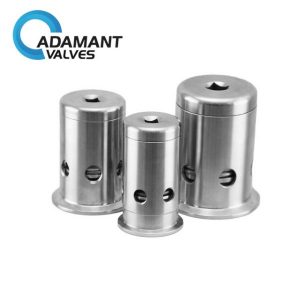
Sanitary Pressure Vacuum Relief Valves
Features:
- The breather valve opens and closes multiple times daily with changes in temperature and liquid level.
- It handles small-scale pressure/vacuum fluctuations.
- The purpose of a breather valve is conservation and environmental protection. It controls “breathing” losses, reducing material evaporation and preventing vapors from being directly released into the atmosphere.
Pressure Relief Valve: The “Fuse” of the Process System
A Pressure Relief Valve is purely a safety device. It remains tightly closed under normal conditions and only activates when the system pressure rises to a dangerous level that could compromise equipment integrity, such as causing fire, explosion, or mechanical damage.
Main function of a pressure relief valve: Emergency pressure relief.
When the system pressure rises sharply due to fire, process failure, runaway chemical reaction, or other abnormal conditions and reaches the PRV’s set pressure, the valve opens quickly to discharge large amounts of material (gas, liquid, or vapor) to a safe location (e.g., a flare system or closed recovery system), thereby protecting the main equipment.
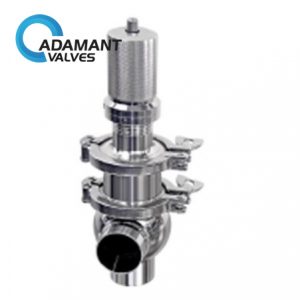
Sanitary Pneumatic Quick-release Safety Valve
Features:
- A Pressure Relief Valve activates only in abnormal or emergency situations. If it activates frequently, it indicates a serious process problem.
- The set pressure of a Pressure Relief Valve is usually close to or equal to the maximum allowable working pressure of the vessel.
- The purpose of a Pressure Relief Valve is safety. It serves as the last mechanical barrier against catastrophic accidents and is a critical safety facility. Its design, manufacturing, and certification must typically comply with strict standards and regulations.
Core Differences between Breather Valve and Pressure Relief Valve
| Feature | Breather Valve | Pressure Relief Valve |
| Primary Role | Pressure Regulator | Safety Protection Device |
| Function | Daily “Exhalation” and “Inhalation” | Emergency “Relief” |
| Set Pressure | Low | High |
| Operating Frequency | Frequent, Cyclical | Rare, Only in Abnormal Situations |
| Main Purpose | Reduce Loss, Protect Environment, Maintain Balance | Prevent Equipment Overpressure Damage, Ensure Safety |
| Discharge Destination | Usually Directly to Atmosphere | Directed to a Safe Location |
An Interesting Combination: Combined Breather Valve
In practical applications, especially on storage tanks, you will often see a device that combines both functions—the Combined Breather Valve.
It typically integrates two functions:
- The lower valve disc handles daily breathing.
- The upper section includes a larger, spring-loaded pressure relief valve. In emergencies such as fire, when the tank pressure rises sharply and exceeds the normal venting capacity of the breather valve, this emergency relief valve opens to perform large-scale discharge.
So, in this case, a single valve body incorporates both “breathing” and “pressure relief” functions, but the internal mechanical structures still operate independently.
Summary
In conclusion, Breather Valves and Pressure Relief Valves are not the same type of valve. Their most fundamental difference lies in this: Breather Valves handle daily, physiological pressure fluctuations, while Pressure Relief Valves address abnormal, pathological dangerous overpressure.


